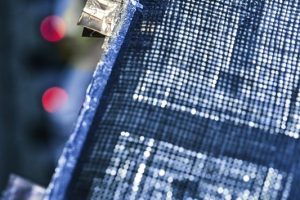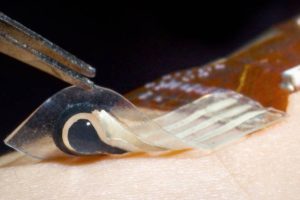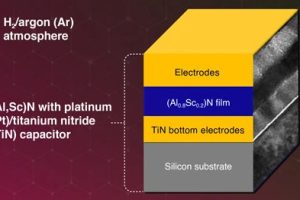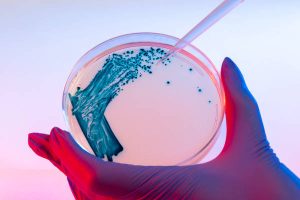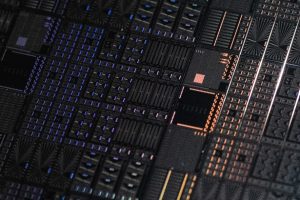We are asking readers of Electronics Weekly to choose the winner of the University Research Project of the Year in this year’s Elektra Awards. The award is kindly sponsored by Panasonic Industry Europe. You are invited to select the research project from the last year that you feel will make the largest impact on the commercial market in the next ...
Research
The latest electronics research news from within the industry and universities from around the world.
Battery can be used as physical structure
Chalmers University of Technology in Sweden has revealed its third generation of structural lithium ion battery. “We have created a battery made of carbon fibre composite that is as stiff as aluminium and energy-dense enough to be used commercially, claimed Chalmers researcher Richa Chaudhary. First revealed with KTH Royal Institute of Technology in 2018, by 2021 the material was achieving 24Wh/kg, ...
Electro-hydraulic actuators make a nimble leg
Electro-hydraulic muscles are sometimes a viable alternative to electric motors in robot legs, according to researchers at Max Planck ETH Center for Learning Systems. This sort of electricity-to-movement transducer uses a liquid-filled bag with electrodes on opposite faces. A high potential difference across the electrodes pulls them together, squashing the liquid out of the way – and that action can ...
Air-stable organic flow batteries
Researchers at the Chinese Dalian Institute of Chemical Physics have produced stable organic redox compounds for use in aqueous flow batteries. “Organic redox-active molecules [ORAMs] are abundant and diverse, offering significant potential for energy storage, particularly in aqueous organic flow batteries,” according to the Institute. “However, ensuring the stability of the ORAMs during the charge and discharge process is critical, ...
Stretchy gel sensor measures biomarkers on dry skin
Health-related chemicals can be detected on dry skin, according to the National University of Singapore (NUS), which developed a stretchable ‘ionic-electronic bilayer hydrogel’ sensor with the Singapore Agency for Science, Technology and Research (A*Star). The chemicals are known as solid-state epidermal biomarkers. “These biomarkers, which include cholesterol and lactate, are found in the stratum corneum, the outermost layer of the ...
Another glimpse behind the superconductivity curtain
Emerging electron pairs in an insulator hint of a hidden mechanism that could be exploited for designer ‘high-temperature’ superconductors. Superconductors need electrons to pair, and then many pairs to become coherent inside the material. “The electron pairs are telling us that they are ready to be superconducting, but something is stopping them,” said Ke-Jun Xu, a researcher at Stanford University’s ...
Modern twist on clockwork stores more energy
Forget exploiting carbon nanotubes electrochemically, and just wind them up like clockwork if you want to store energy. This is not quite the message that researchers at the University of Maryland Baltimore County are delivering, but it might as well be as a team from there is storing 2.1MJ/kg in twisted carbon nanotubes – more, weight-for-weight, than Li-ion chemistry can ...
Switch to scandium for high temperature ferroelectrics
Tokyo Tech has picked aluminium scandium nitride (AlScN) to make ferroelectric films that remain stable at up to 600°C in hydrogen. “This high stability makes them ideal for high-temperature manufacturing processes under the H2-included atmosphere used in fabricating advanced memory devices,” said the university. “Compared to existing ferroelectric materials, these films maintain their ferroelectric properties and crystal structure even after ...
Just what are microbial sensors capable of?
The Defense Advanced Research Projects Agency (DARPA) has teamed up with Massachusetts-based Draper to streamline the design of microbe-based electronic sensors. “Microbes have the potential to be developed as biological sensors that can collect vital information about the environments they naturally inhabit,” said Draper biotechnologist Chris Vaiana. “Our goal is to support DARPA in mapping the modular design of microbe-based ...
300mm silicon-based quantum dot spin qubits
Imec has used 300mm wafers to demonstrate silicon-based quantum dot spin qubit processing. The devices had an average charge noise of 0.6µeV/√Hz at 1Hz. “In view of noise performance, the values obtained are the lowest charge noise values achieved on a 300mm fab-compatible platform,” according to the Belgian research lab. “By demonstrating those values, repeatedly and reproducibly this work makes ...
 Electronics Weekly Electronics Design & Components Tech News
Electronics Weekly Electronics Design & Components Tech News

